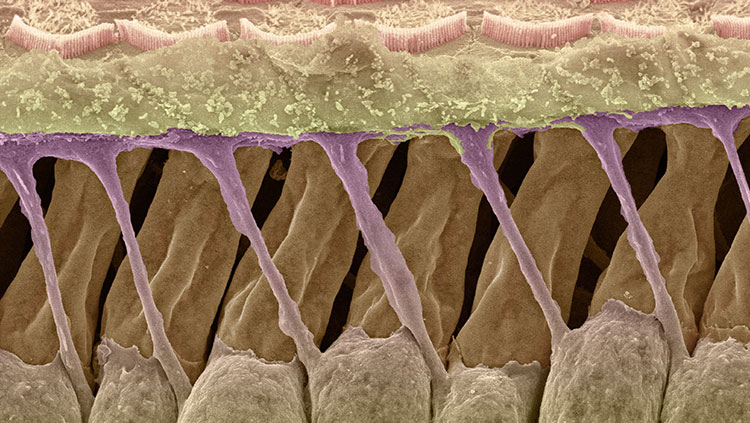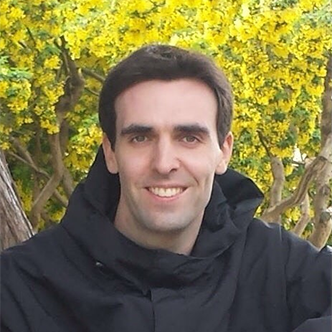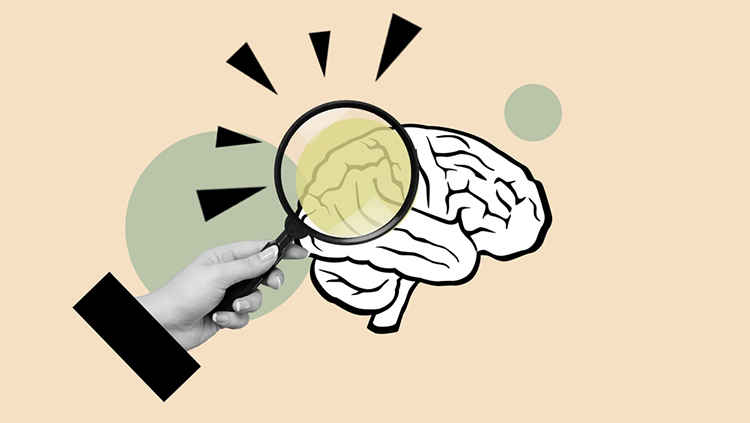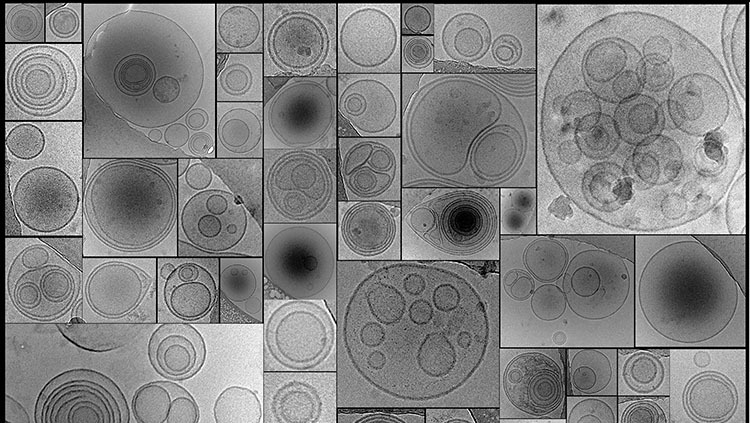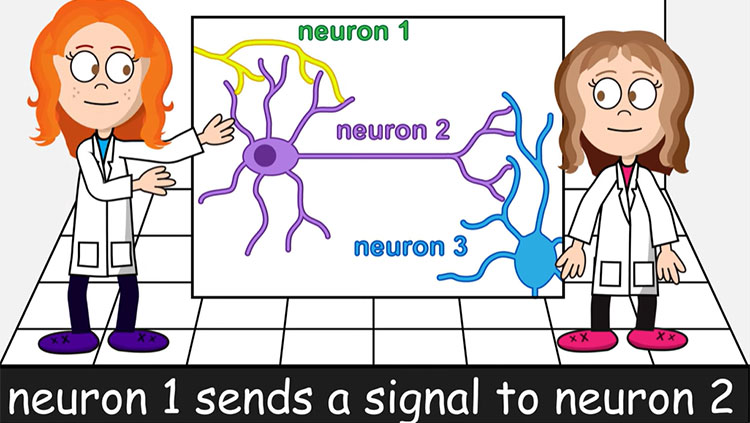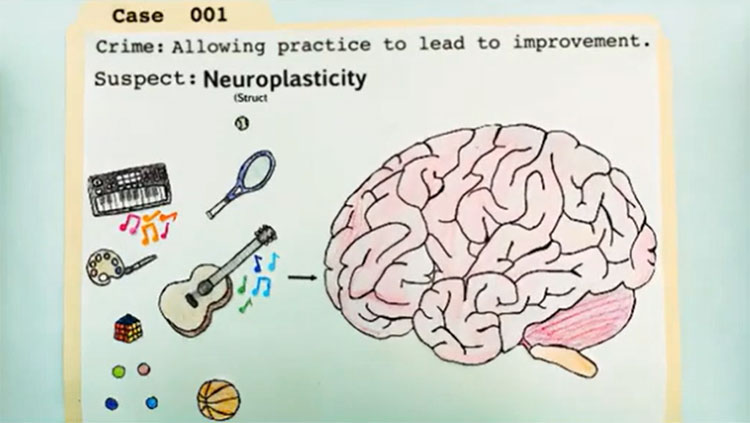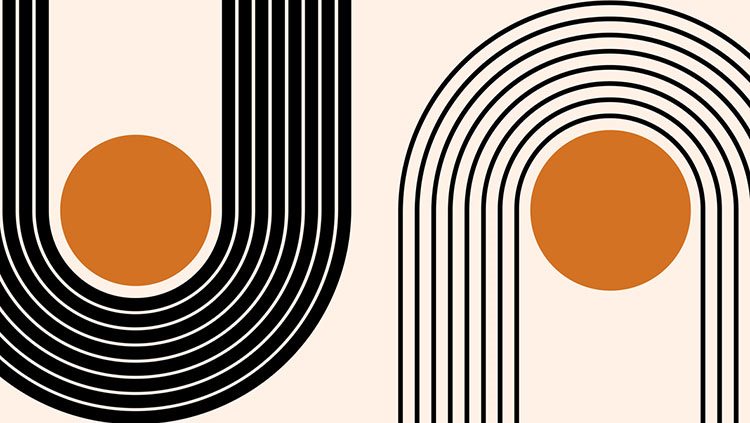Holding the Inner Ear Together
- Published7 Apr 2020
- Author Charlie Wood
- Source BrainFacts/SfN
How does the inner ear keep steady in the face of rumbling sound waves and destabilizing head shakes? It borrows a trick straight from architectural textbooks. These purple beams, part of a type of supporting cell called “Deiter’s Cells,” together with the outer hair cells that are also in close contact with Deiter’s cells, employ cross bracing — a strategy used to strengthen buildings against earthquakes — to support the inner ear.
Researchers are learning that Deiter’s cells are more than just sturdy supports — they protect the hair cells. Deiter’s cells have a protein that pumps potassium ions so hair cells fire properly. Without these pumps, the potassium can build up and kill hair cells, causing deafness. Deiter’s cells also secrete another protein called otogelin, that also provides structural support for the inner ear. Other lines of evidence suggest that supporting cells, like Deiter’s cells, may even help revitalize damaged hair cells — although more so in fish and birds than in mammals.
CONTENT PROVIDED BY
BrainFacts/SfN
References
Also In Cells & Circuits
Trending
Popular articles on BrainFacts.org


